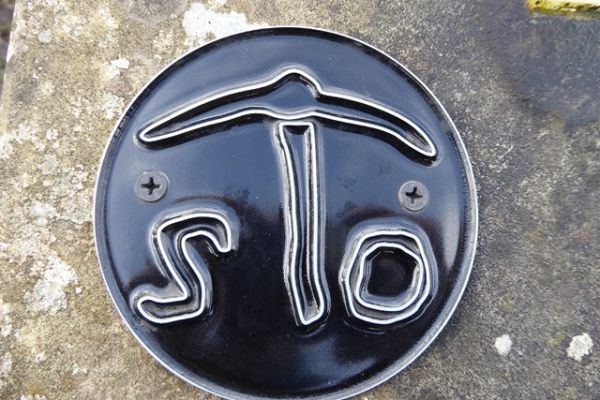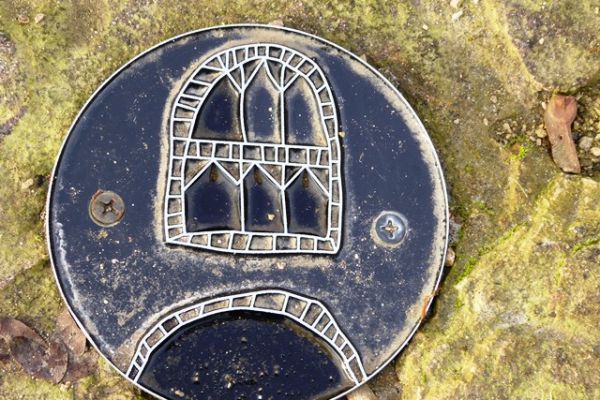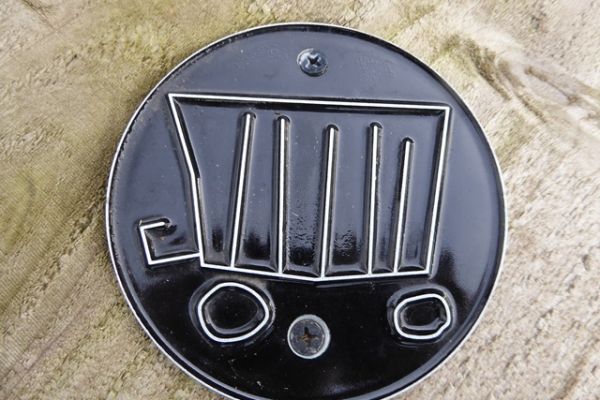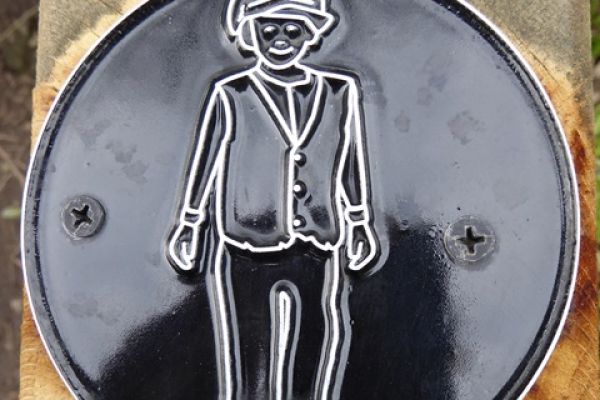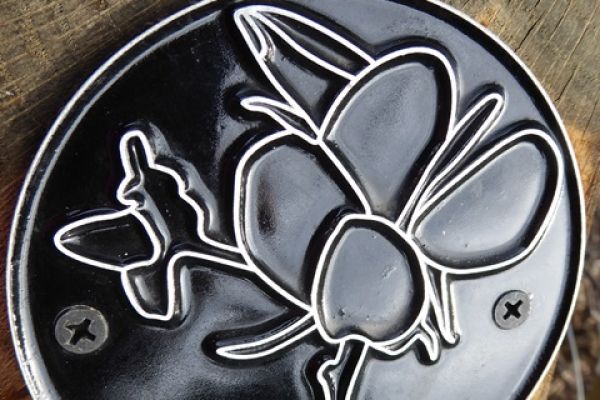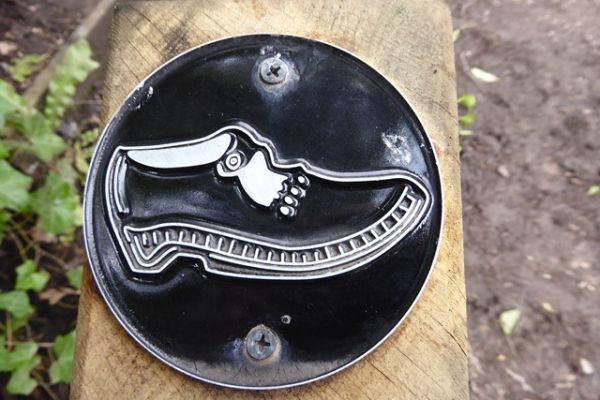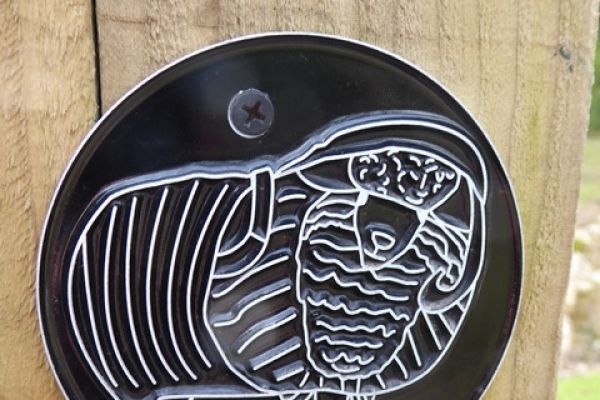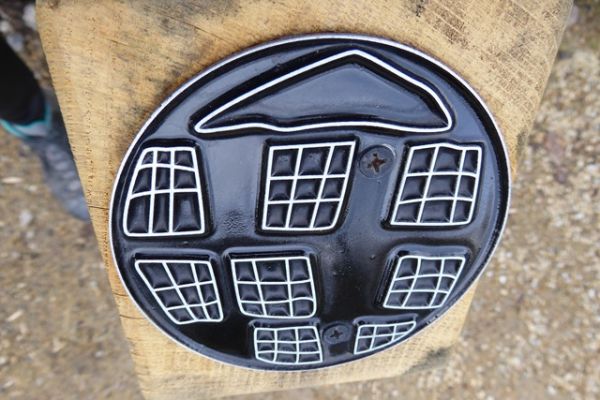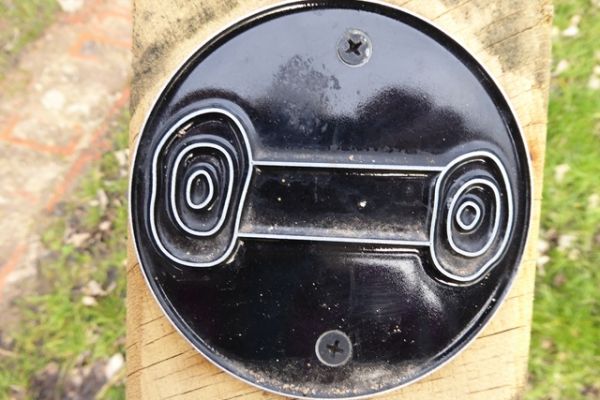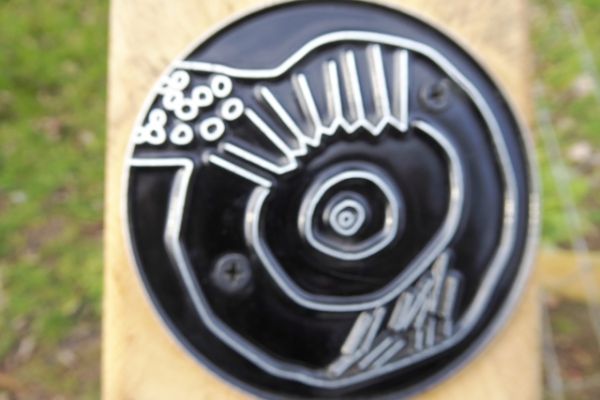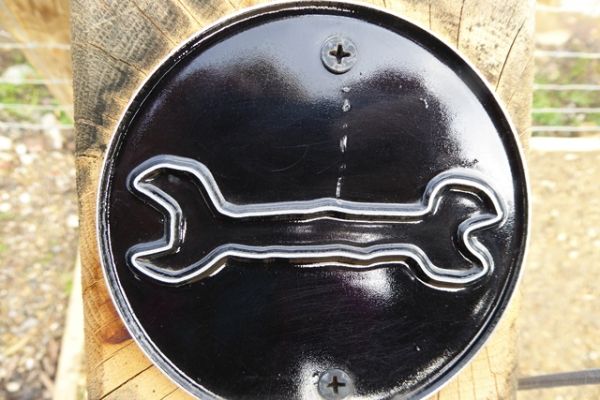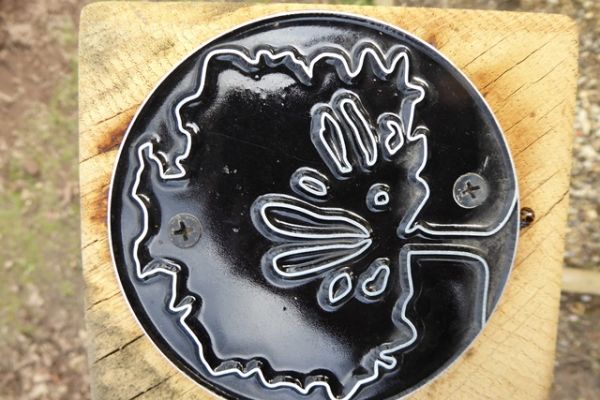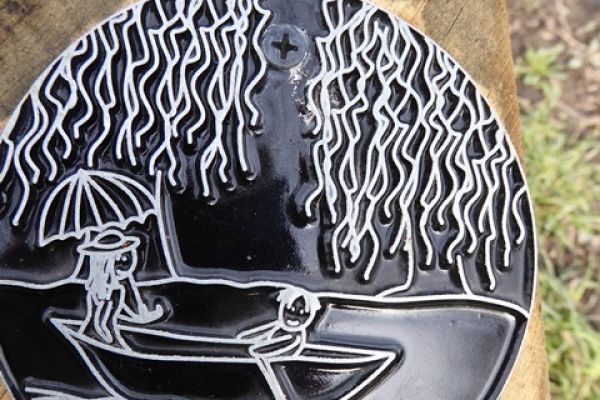The recently completed ‘Revealing Oldknow’s Legacy Project’ had three parts: restoration of the Peak Forest Canal Aqueduct, investigation of the industrial archaeology and landscaping of the lime kiln complex off Strines Road, and furtherance of the industrial archaeological excavations of the Mellor Mill site, which had started in 2011 prior to granting of Heritage Lottery money in 2014.
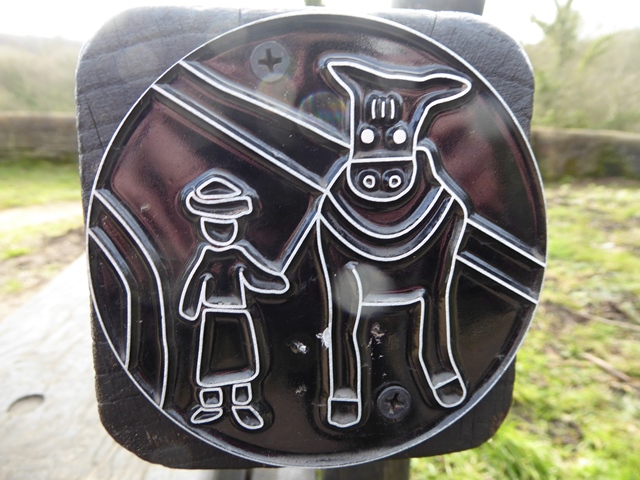
On a seat at Romiley end of the Aqueduct
A prime part of any Lottery project is involvement and education of the public. During this one much work was done with young people, and the sites were used in various imaginative ways. School children took part in archaeological digging, used information in ‘local studies’, made a film and wrote stories. They drew images giving their impressions of aspects of the various sites and connecting routes. Some of these were used to create embossed metal ‘rubbing tiles’ which have been placed at appropriate points. The idea is to place a piece of paper over the tile, and shade with a pencil or crayon when an impression of the image emerges.
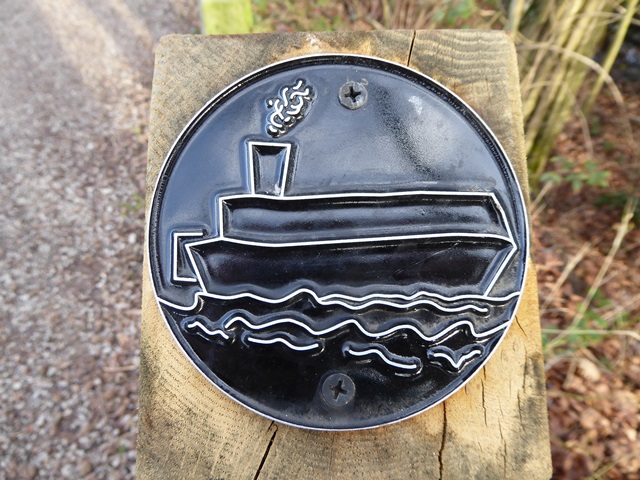
above: Near Lock 7
This is an activity aimed at children, but why shouldn’t the grown-ups join in? So, one morning husband Eddie and I set off to ‘hunt the tiles’ armed with paper and crayons. We started at the aqueduct, taking the opportunity to go down the new footpath to admire the structure from below, and to enjoy the lovely railings on the off-side of the aqueduct, designed to emulate the warp threads of a weaving loom, a metaphor for the textile industry. We followed the towpath up the lock flight to the lime kilns, and walked along the canal to Brick Bridge, down to Strines Road and took the footpath which crosses the railway and emerges at the bottom of Lakes Road near Mellor Lodge, then on to Mellor Mill, finishing for refreshments at the Roman Lakes café.
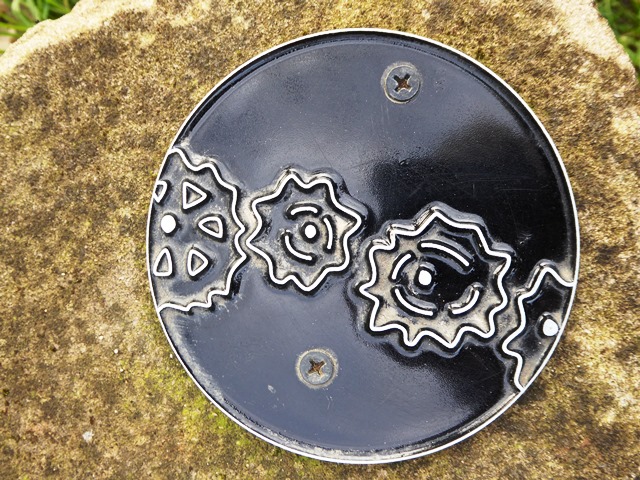
above: On the stone seat looking towards the Engine House
Along the way we found and rubbed 18 tiles. The exercise took us about 3 hours, and we had great fun looking for and rubbing the tiles, and deciding what they represent. It gave a new dimension to a walk exploring our local heritage and certainly makes you look around carefully. Of course, you don’t have to take on the lot in one go, but accompanying this article is a picture of every tile in the order we found them in case you want to follow an itinerary. There is no certainty that we’ve seen them all, so keep your eyes peeled.
by Judith Wilshaw

